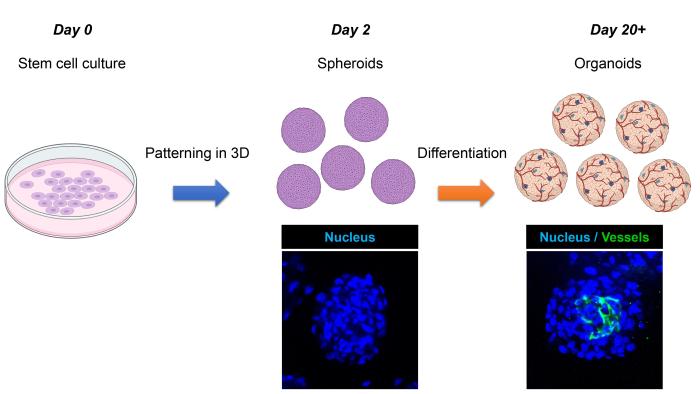The PRO-EURO-DILI Network, an international consortium of scientists investigating drug-induced liver injury, including scientists from the Laboratory of Biophysics, Division of Optics, Institute of Physics of the Czech Academy of Sciences, has presented a revolutionary advance in the development of liver organoids. Their new method opens the door to a wide range of applications, from cell therapy to disease modelling, and represents a huge advance in liver disease research. The results of the research have been published in the prestigious Experimental and Molecular Medicine journal belonging to the Nature family.
The research team has presented an innovative approach to creating liver organoids (i.e., smaller and simplified versions of the liver) that is three orders of magnitude cheaper and significantly easier than the previous methods of their production. It eliminates the need for 2D patterning, does not require intercellular mass to grow organoids, and uses small molecules to mimic embryonic liver development. The result is the production of organoids with a high degree of similarity to the liver, performing its key functions such as drug metabolism, serum protein production, urea synthesis and production of coagulation factors. Organoids have been successfully transplanted and maintained in mice with human albumin production.
"Our method represents a breakthrough in the field of liver organoid creation. It offers a new standard for applications ranging from cell therapy to disease modelling. It can also significantly help in the pre-market testing of new drugs and thus significantly reduce the risks of drug-induced liver injury, which is precisely the goal of the work within the Prospective European Drug-Induced Liver Injury Network (PRO-EURO-DILI Network) international consortium," said Oleg Lunov, head of the Biophysics Laboratory, who represents the Institute of Physics in the consortium.
Head of the Division of Optics of the Institute of Physics, Alexander Dejneka, adds: "This study is an excellent example of scientific excellence and shows how important international and interdisciplinary collaboration is for science today. Scientists of the Division of Optics of the Institute of Physics provide the consortium with their expertise in microscopic imaging methods and are able to make observations and measurements of cells at high resolution and with excellent precision."
The liver is important in the metabolism of substances in the body and also plays a key role in maintaining homeostasis and is essential for the metabolism of xenobiotics, production of coagulation factors and ammonia processing. Current research methods, including the use of human cells with high potential for transformation, fail to fully reproduce the diversity of cellular and structural properties of the liver. This new approach allows the creation of liver organoids without the need for costly growth factors. These organoids can be scaled up and represent a genetically defined alternative to human liver cells, which are severely limited in availability.
Research into Drug Induced Liver Injury (DILI) and its understanding begins with preclinical drug development and continues through clinical trials to commercialisation. The aim of the PRO-EURO-DILI-NET consortium is to create a unique, collaborative, interdisciplinary European DILI network that would coordinate the efforts of experts from different fields of science with the aim to understand the mechanisms behind the emergence of DILI. The network brings together several hundred experts from 28 countries around the world.
The full article is available at the following link: https://www.nature.com/articles/s12276-023-01074-1.
